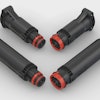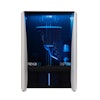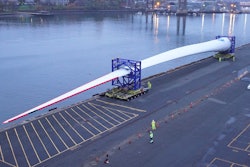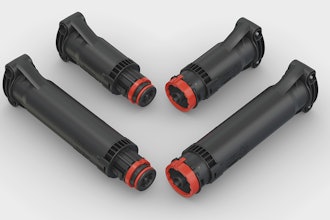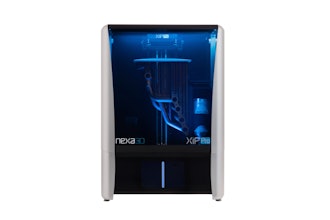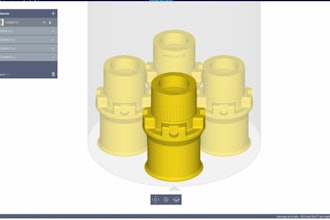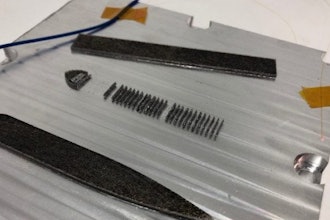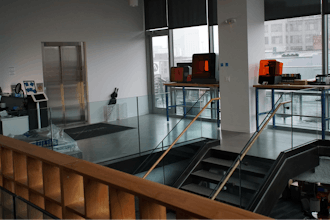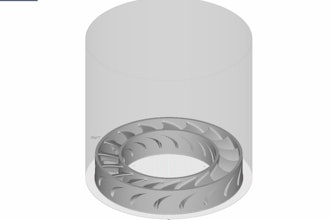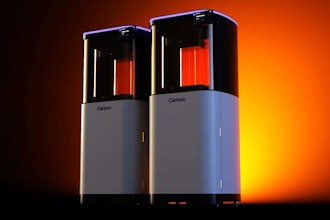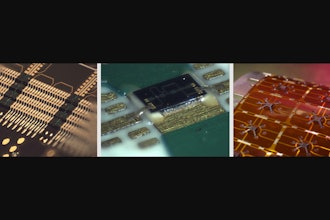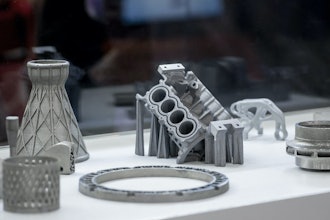ANYmal Gets Upgrade
This week, researchers from the Robotic Systems Lab at the Swiss Federal Institute of Technology gave the ANYmal an upgrade: wheels. The quadrupedal robot now has actuated wheels, so it not only walks, but it drives, and it knows when one is the best mode of transportation.
The new work uses onboard sensors to choose between leg and wheel functionality (or a combination of the two) to rapidly and autonomously map and traverse long distances and challenging terrain. The researchers call it Hybrid Locomotion for Wheeled-Legged Robots.
Depending on the terrain, the ANYmal can adapt its gait and transition between driving and walking. For example, it knows how to cruise to a curb, stop and step down, or determine if it can just drive over it.
The researchers recently competed in the DARPA subterranean challenge, and it worked more like a feasibility study. During the competition, the robot rapidly mapped, navigated and explored dynamic underground environments in an old mine in Pittsburgh.
The challenge also provided a direct comparison to the traditional ANYmal, as the non-wheeled previous generation competed as well. The wheeled version was at least twice as fast at completing tasks.
The researchers submitted the paper, “Rolling in the Deep -- Hybrid Locomotion for Wheeled-Legged Robots using Online Trajectory Optimization” to IEEE Robotics and Automation Letters and IEEE International Conference on Robotics and Automation (ICRA) 2020 in Paris.
Next, the team will compete in the Urban Circuit of DARPA’s Subterranean Challenge. They believe their wheeled-legged ANYmal will stand out as it navigates human-made underground environments like municipal infrastructure and mass transit.
3D-Printed Homes for the Homeless
In March 2018, we introduced you to ICON, a company that is disrupting the construction industry by 3D printing homes in Austin, Texas, in 12 to 24 hours.
Large-scale 3D printers have created some exotic living environments of late, including homes that look like giant stones, as well as martian habitat prototypes.
Last week, ICON unveiled a 500-square-foot welcome center in Austin. It was printed in less than 27 hours and built as part of a partnership with Mobile Loaves & Fishes (MLF), a local non-profit that works with the area's homeless community.
The welcome center was printed using ICON's Vulcan II printer, which uses a proprietary concrete they call "Lavacrete.”
The center is part of MLF's Community First village, which provides affordable, permanent housing for the homeless. The community spans 51 acres and, when it's at full capacity, it could house around 480 formerly homeless individuals -- about 40 percent of Austin's homeless population.
ICON expects to start printing six homes this year, and according to the company, this will be the first time three houses will be simultaneously 3D-printed.
The team did not disclose the welcome center’s cost. Back in 2018, the prototype cost $10,000. The end goal is to print single story, 600- to 800-square-foot homes for less than $4,000 each.
According to Dmitri Julius, director of operations at ICON, the future of home-building is 3D printing. He says it's not just a novel concept and believes that it could make homes more affordable for everyone.
50-Foot Tower Made from Shape-Shifting Wood
A team of researchers from the University of Stuttgart and Swiss Federal Institute of Technology Zurich has built a nearly 46-foot-tall (14 m) tower out of shape-shifting wood. A bit of a departure from affordable housing, but this one is art too.
Urbach Tower in Germany stands as a tech demonstration using cross-laminated timber (CLT) made with new self-shaping manufacturing technology.
In the timber business, moisture is a problem. It causes cracks and deformation and has to be closely monitored and controlled. This project embraces moisture, and through the use of digital models and finite element analysis software, it can predict the result. According to the researchers, this new method is not that different from the way machines are programmed to perform various movements. These wood parts can be "programmed" to transform into predetermined shapes.
Right now, wood is shaped using energy-intensive mechanical forming processes that require heavy machinery. This shape change is the result of the wood’s natural shrinking as it loses moisture. The team takes multiple pieces of wood called the “active layer” and attaches them to a long, thin piece of wood, or “passive layer.” The laminated bilayer is left to dry and forms the pre-planned curvature.
The researchers released a time-lapse video that shows a 1.5 m x 0.5 m piece of Norway spruce change shape. The board is 31.5 mm thick -- the passive layer is 6.5 mm, and the active layer is 25 mm. This particular change took more than 270 hours in a drying chamber.
The Urbach Tower has 12 curved components made from cross-laminated timber that was designed and manufactured in a flat state and transformed during the drying process. According to the researchers, the new technique opens up unexpected architectural possibilities. Bilayer lamination and kiln-drying could be used on an industrial scale to create everything from curved roofs to self-shaped walls.
The prefab tower was assembled in a single workday by a team of four without scaffolding or formwork. It stands as a testament to the combination of master craft, digital innovation and scientific research.

